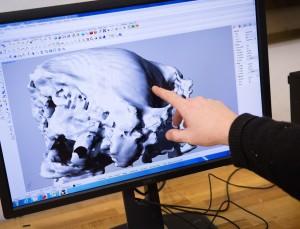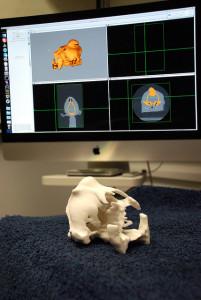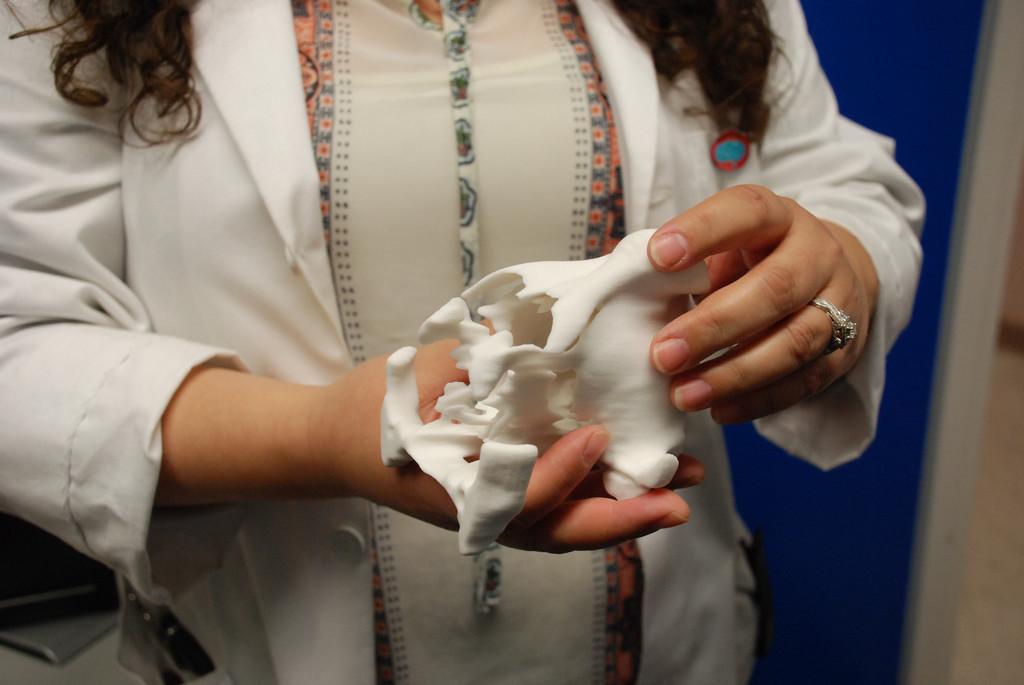 Most animal lovers have known the sorrow of losing a beloved pet. It’s horrible, especially when you have to make the decision to put an animal to sleep because of a painful, untreatable illness. I’ve had to say goodbye to many dogs and cats in my lifetime, and it’s a terrible feeling to know that there’s nothing you can do to help a pet you’ve loved for years. (I’m getting teary right now – darn it.) Some bright news for pet owners is on the horizon, though. It’s becoming widely known that 3D printing is saving the lives of humans with all sorts of serious medical conditions, but now veterinarians are beginning to realize that the same technology can be used to help our animal friends as well.
Most animal lovers have known the sorrow of losing a beloved pet. It’s horrible, especially when you have to make the decision to put an animal to sleep because of a painful, untreatable illness. I’ve had to say goodbye to many dogs and cats in my lifetime, and it’s a terrible feeling to know that there’s nothing you can do to help a pet you’ve loved for years. (I’m getting teary right now – darn it.) Some bright news for pet owners is on the horizon, though. It’s becoming widely known that 3D printing is saving the lives of humans with all sorts of serious medical conditions, but now veterinarians are beginning to realize that the same technology can be used to help our animal friends as well.
Evelyn Galban, a neurosurgeon who lectures at the University of Pennsylvania’s School of Veterinary Medicine, agrees. Dr. Galban recently became acquainted with a dog named Millie, who was brought in with a large tumor in her skull, one that was going to be difficult to treat – unless the vet could plan out the surgery ahead of time. Dr. Galban enlisted the help of the School of Design’s Fabrication Lab to turn Millie’s CAT scan data into 3D models, which were used to 3D print a replica of the dog’s skull. The gypsum model, which took about 6 hours to print, allowed Dr. Galban to closely examine the tumor, which protruded out from the top of Millie’s skull as well as inward, impacting her brain.
“It’s difficult to fully understand the malformation until we have it in our hands,” Dr. Galban said. “That usually doesn’t happen until we’re in surgery.”
 The replica will allow Dr. Galban to carefully plan and practice the surgery ahead of time, avoiding possible mistakes and risks that could be life-threatening during an actual surgery. In addition, the removal of the tumor was going to leave Millie with a very soft spot in her head, one that would need to be covered with a titanium mesh plate to protect her brain. Rather than having to keep Millie in surgery for a longer time while the surgical team measured, fabricated and fitted the plate to her skull, Dr. Galban is able to design the plate and fit it to the 3D model so that it can be quickly attached to Millie’s real head during surgery.
The replica will allow Dr. Galban to carefully plan and practice the surgery ahead of time, avoiding possible mistakes and risks that could be life-threatening during an actual surgery. In addition, the removal of the tumor was going to leave Millie with a very soft spot in her head, one that would need to be covered with a titanium mesh plate to protect her brain. Rather than having to keep Millie in surgery for a longer time while the surgical team measured, fabricated and fitted the plate to her skull, Dr. Galban is able to design the plate and fit it to the 3D model so that it can be quickly attached to Millie’s real head during surgery.
We’ve seen this type of technology being used with more frequency in human surgeries, so it shouldn’t be surprising that it’s now starting to appear in veterinary procedures as well. Dr. Galban is working with PennDesign’s Stephen Smeltzer and Dennis Pierattini, along with veterinary residents Jon Wood and Leontine Benedicenti, to create 3D printed models of other dogs and cats suffering from deformities or injuries. Not only can these models help the individual animals, but they can also serve as valuable training aides for veterinary students.
“These objects have opened up to have applications in the real world, and that’s fascinating and enjoyable to see,” said Smeltzer. “Last week I had no idea that this was going to be happening, and now all of a sudden I have a vested interest in Millie.”
You can hear Dr. Galban describe the technology in greater detail here below. Are you surprised to hear that veterinarians are getting in on this technology too? Discuss in the 3D Printed Surgical Models for Animal Treatment & Training forum over at 3DPB.com.
[Images: University of Pennsylvania]Subscribe to Our Email Newsletter
Stay up-to-date on all the latest news from the 3D printing industry and receive information and offers from third party vendors.
You May Also Like
Why Corrosive Resistant Materials Are Important to the Success of 3D Printing Across Industries
The adoption of additive manufacturing (AM) is accelerating across many major industries. As this technological shift unfolds, the importance of corrosion resistance has emerged as a challenge for 3D printing...
America Makes Announces IMPACT 2.0: $6.6M in New 3D Printing Funding
America Makes, the Manufacturing Innovation Institute (MII) based in Youngstown, Ohio, has announced IMPACT (Improvement in Manufacturing Productivity via Additive Capabilities and Techno-Economic Analysis) 2.0, a project call which will...
3D Printing Webinar and Event Roundup: April 14, 2024
We’re starting off the week’s 3D printing webinars and events at ASTM AMCOE’s 11th Snapshot Workshop and MACH Exhibition. Stratasys continues its advanced training courses, SME is holding a virtual...
AMUK Welcomes Airframe Designs as British 3D Printing Industry Grows
While the UK is not the hub for 3D printer and materials manufacturers as other nations, the country continues to excel at the research, development, and application of additive manufacturing...

































